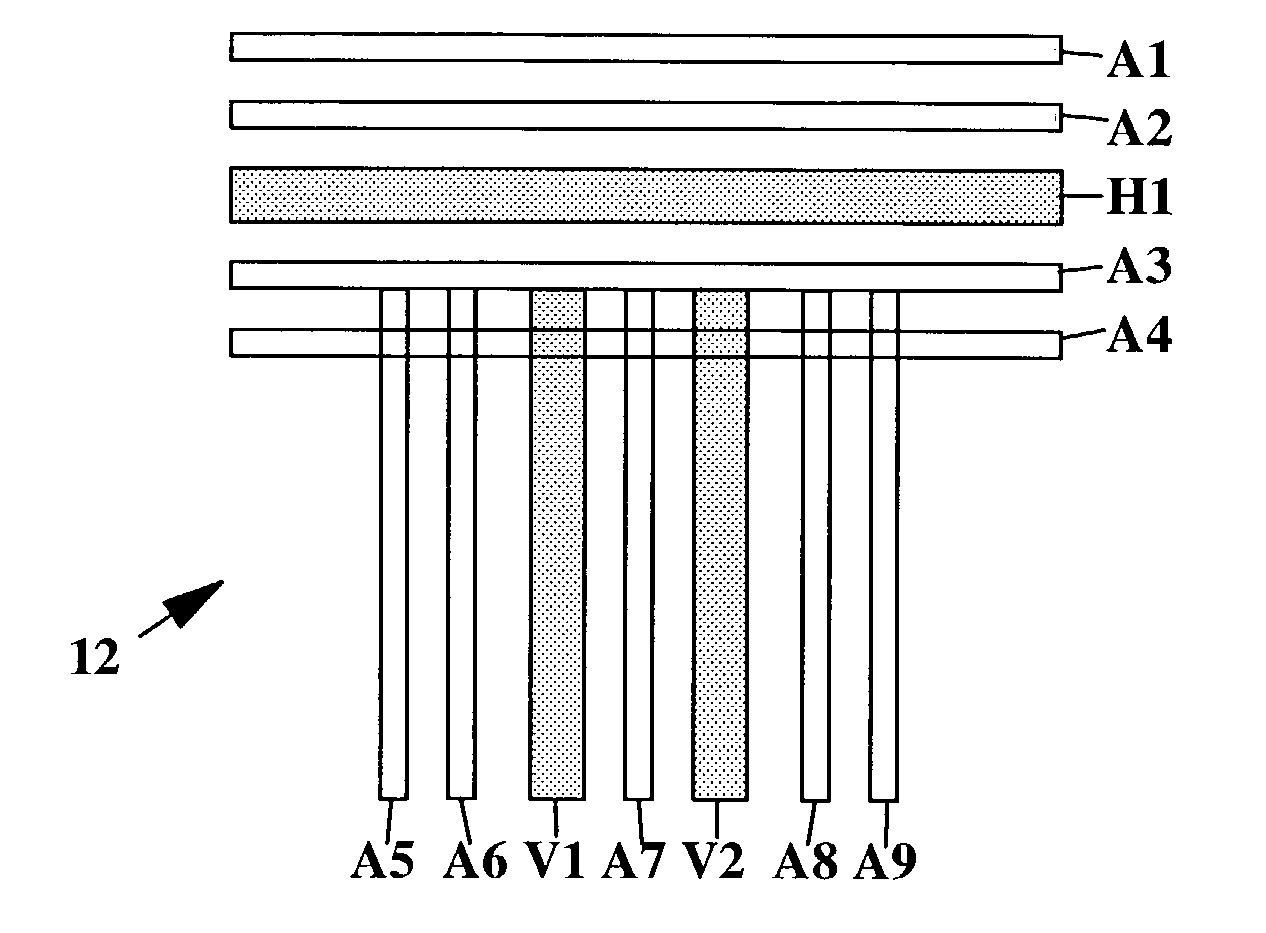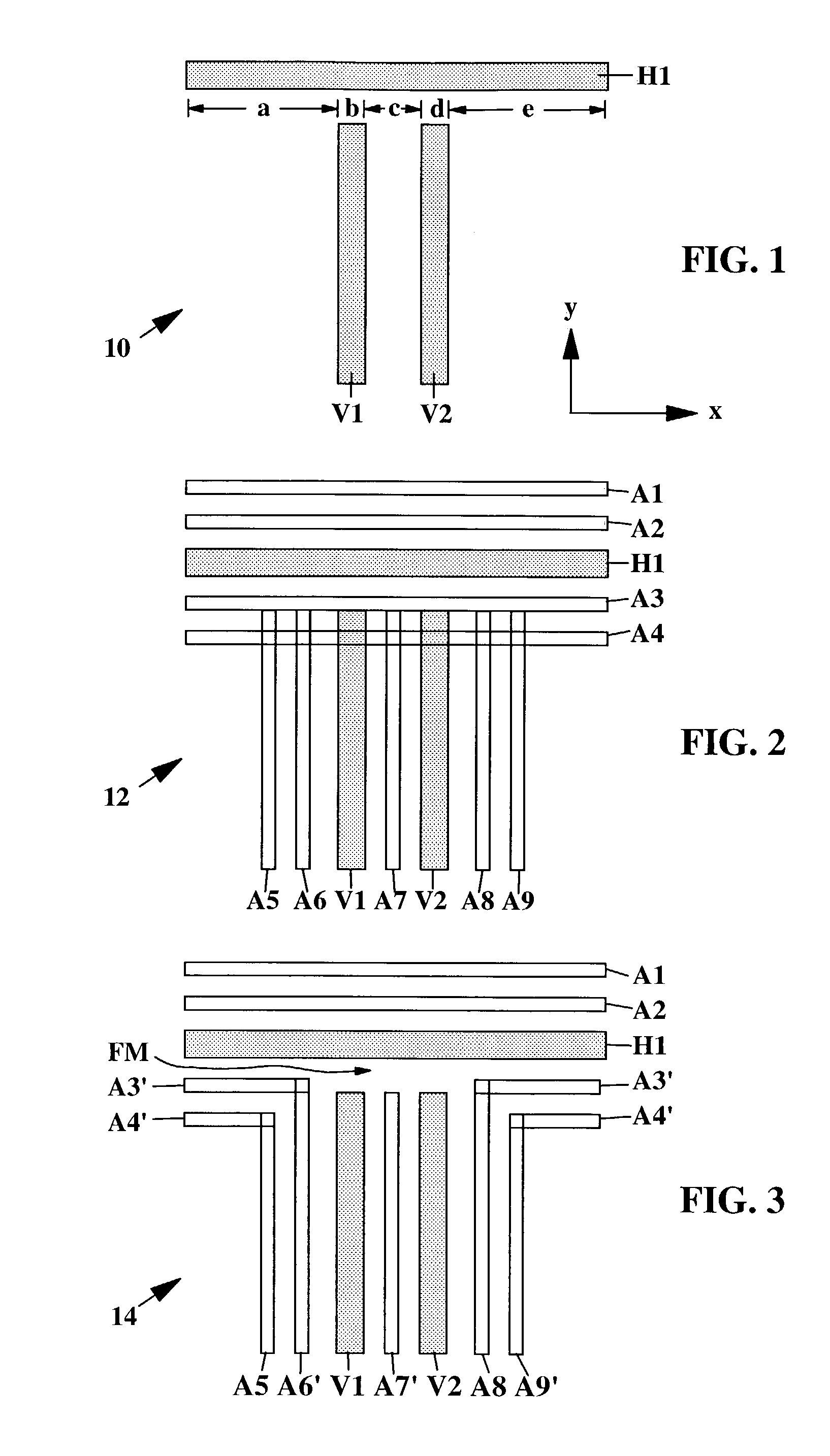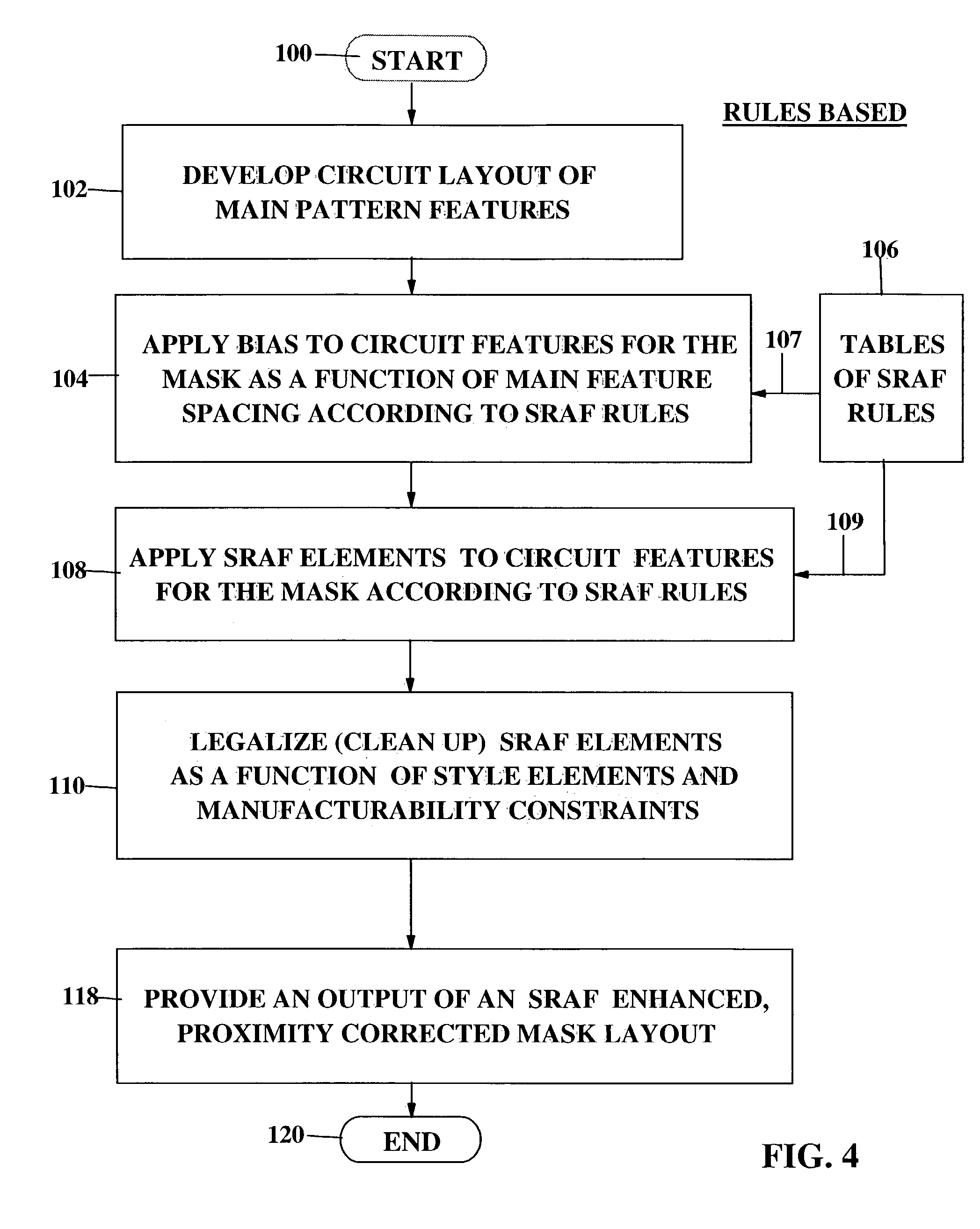Binary OPC for assist feature layout optimization
a feature layout and binary opc technology, applied in the field of photolithography, can solve problems such as catastrophic failures, and achieve the effects of preventing catastrophic failures, poor process window, and superior gate level process
- Summary
- Abstract
- Description
- Claims
- Application Information
AI Technical Summary
Benefits of technology
Problems solved by technology
Method used
Image
Examples
first embodiment
of the Invention
Rules-Based Binary-Optical Proximity Correction (OPC) with SRAF
[0109]FIG. 8 is a flow chart illustrating an application of Binary OPC steps to the Rules-Based SRAF elements, which incorporates main feature sizing as part of the SRAF design, which is a modification of the flow chart of FIG. 4, with the addition of steps 112 and 114. As in FIGS. 4 and 5, the program START begins with step 100 which leads to step 102. In step 102, the first data processing system develops a circuit layout of main pattern features of a chip that are input into the CAD system that includes a data entry unit such as a keyboard, a CPU and a DSD, inter alia. The steps 102, 104, 108 and 110 as well as rules table 106, are identical to those described above in connection with the Rules Based SRAF process described with reference to FIG. 4.
[0110]The first new step of the method of this invention is step 112 in which the system identifies problem (critical) edge segments of a main pattern featur...
second embodiment
of the Invention
Model-Based Optical Proximity Correction (OPC) with SRAF
[0114]FIG. 9 is a flow chart illustrating a Binary OPC implementation in the Model-Based SRAF elements flow chart of FIG. 5. In FIG. 9 a modified step 114′ based on the selective bias step 114 of FIG. 8 is applied to the Model-Based SRAF flow chart of FIG. 5. As in FIGS. 4, 5 and 8, the START step 100 leads to step 102. The steps 102, 108 and 110 as well as the table of SRAF rules 106, are the same as in FIG. 5 and step 112 which is the same as in FIG. 8 follows step 110 as in FIGS. 5 and 8. The process of FIG. 9 omits the step 104 of FIGS. 4 / 8 and performs the step 108 in place thereof.
[0115]In step 112, the CAD system must apply rules to identify the problem edge segments of the main pattern features based upon insufficient SRAF element coverage, i.e. which SRAF elements of the current design of the mask being developed by the CAD system are at risk of being spaced too far apart and therefore require performan...
PUM
| Property | Measurement | Unit |
|---|---|---|
| size | aaaaa | aaaaa |
| sizes | aaaaa | aaaaa |
| pressure | aaaaa | aaaaa |
Abstract
Description
Claims
Application Information
 Login to View More
Login to View More - R&D
- Intellectual Property
- Life Sciences
- Materials
- Tech Scout
- Unparalleled Data Quality
- Higher Quality Content
- 60% Fewer Hallucinations
Browse by: Latest US Patents, China's latest patents, Technical Efficacy Thesaurus, Application Domain, Technology Topic, Popular Technical Reports.
© 2025 PatSnap. All rights reserved.Legal|Privacy policy|Modern Slavery Act Transparency Statement|Sitemap|About US| Contact US: help@patsnap.com



